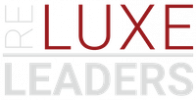Secrets Revealed: How to Skyrocket Your Luxury Real Estate Sales by Maximizing Online Channels
A Luxury Real Estate Marketing Consultant’s Perspective
Unlock the potential of luxury real estate with ‘Maximizing Online Channels’. Dive deep into digital strategies that resonate with sophistication, and let every property shine in the vast digital landscape.
Maximizing Online Channels: Mastering the Digital Elegance in Luxury Real Estate
 In the shimmering tapestry of luxury real estate, every property tells a tale of aspiration, opulence, and artistry. Yet, in this modern era, our storytelling canvas has expanded beyond brick and mortar, winding its way through the intricate labyrinth of the digital domain. Here, in this vast expanse, narratives aren’t just told; they’re sculpted, painted, and broadcasted. The luxury home isn’t just a space; it’s an experience, a dream, a digital whisper of grandeur that reaches the farthest corners of the world. This journey into the digital avenues of luxury real estate is an odyssey, where ancient grandeur meets modern sophistication, and where dreams are crafted with pixels and code. Let us embark on this exploration, understanding the tools, techniques, and tales that shape the digital horizon of luxury real estate.
In the shimmering tapestry of luxury real estate, every property tells a tale of aspiration, opulence, and artistry. Yet, in this modern era, our storytelling canvas has expanded beyond brick and mortar, winding its way through the intricate labyrinth of the digital domain. Here, in this vast expanse, narratives aren’t just told; they’re sculpted, painted, and broadcasted. The luxury home isn’t just a space; it’s an experience, a dream, a digital whisper of grandeur that reaches the farthest corners of the world. This journey into the digital avenues of luxury real estate is an odyssey, where ancient grandeur meets modern sophistication, and where dreams are crafted with pixels and code. Let us embark on this exploration, understanding the tools, techniques, and tales that shape the digital horizon of luxury real estate.
Maximizing Online Channels: The Significance of Digital Marketing in Luxury Real Estate
Digital marketing has become the heartbeat of modern business strategies, and luxury real estate is no exception. Gone are the days when luxury properties were only showcased in elite circles. Today, the world is the audience. The digital domain offers unparalleled reach, connecting dream homes with dreamers, no matter where they reside.
And within the luxurious walls of high-end real estate, digital marketing isn’t just a tool; it’s an art form. It’s the alchemy of blending the tactile allure of a property with the ethereal nature of the digital, crafting narratives that resonate with an audience that seeks exclusivity and distinction.
Maximizing Online Channels: The Pillars of Digital Marketing in Luxury Real Estate
Think of digital marketing as an opulent mansion. Each room, each corner, is a facet of the strategy. Social media is the grand ballroom, a space of interaction, display, and engagement. Email marketing, on the other hand, is the personalized study, offering a more intimate conversation with the potential buyer. Search Engine Marketing (SEM) is the beacon, the lighthouse, ensuring that seekers find their way to the estate.
Each pillar, each channel, plays a distinctive role. Yet, they all converge towards a single goal — crafting a digital experience that mirrors the luxury, elegance, and exclusivity of the properties they represent.
Maximizing Online Channels: Utilizing Social Media for Luxury Real Estate
The world lives on social media. It’s the digital salon where people gather, converse, and showcase. For luxury real estate, social platforms offer a canvas where properties can be painted not just as spaces, but as dreams. But it’s not about mere listing; it’s about storytelling. The key is in selecting the right platforms, curating content that resonates with the ethos of luxury, and leveraging analytics to continually refine and enhance the narrative.
From the opulence of a mansion’s interiors to the tranquility of its surrounding landscapes, every post, every story aims to engage, enthrall, and enamor the discerning audience.
Maximizing Online Channels: Email Marketing: The Art of Direct Communication
While the digital realm thrives on broad interactions, there’s an undying charm in personal communication. Email marketing is that bridge. It’s the handwritten letter in a digital age, offering a direct, personalized connection with potential buyers. It’s about segmenting audiences, understanding their desires, and crafting messages that resonate.
Whether it’s an exclusive property preview, an invitation to a private showing, or a newsletter detailing the latest in luxury trends, each email is a blend of information and invitation, designed to entice and engage.
Maximizing Online Channels: Search Engine Marketing: Capturing Online Searches
In the vast expanse of the internet, standing out is paramount. Search Engine Marketing ensures that when someone dreams of luxury and searches for it, your properties are what they find. It’s a dual strategy – employing Search Engine Optimization (SEO) to organically rise to prominence and leveraging Pay-Per-Click (PPC) campaigns to strategically position listings.
With meticulous keyword research and continuous strategy refinement, SEM ensures that luxury properties don’t just exist online; they shine, attracting those who seek the extraordinary.
Maximizing Online Channels: Designing Luxury Real Estate Websites: Your Digital Storefront
If one were to consider the digital domain a sprawling metropolis, then a website is the luxury property’s grand facade. It’s where impressions are formed, interests are kindled, and engagements begin. From its architectural design to its content decor, every element of the site should exude luxury.
Integrated Call-To-Actions, for instance, are akin to inviting doorways, prompting visitors to explore further, inquire, and engage. And just as a property’s locale plays a crucial role in its allure, so does SEO in drawing visitors to the website. In essence, the website isn’t just a platform; it’s the digital embodiment of luxury.
As we journey through the multifaceted world of digital marketing in luxury real estate, it’s evident that it’s not about mere tactics; it’s about crafting a digital tapestry that resonates with the sophistication, elegance, and exclusivity that luxury clients seek. It’s about understanding, adapting, and innovating, ensuring that every digital touchpoint mirrors the opulence of the properties on display.
Maximizing Online Channels: Content Marketing: The Gallery of Luxury Narratives
In luxury real estate, content isn’t merely information; it’s an experience. Just as every brick, window, and fixture in a luxury home tells a story, so should your content. Whether detailing architectural marvels or showcasing the serenity of a property’s locale, the aim is to transport the reader.
Utilizing various formats – be it evocative blogs, immersive videos, or 360-degree virtual tours – allows a brand to create a multidimensional narrative. And in this digital gallery, the prospective buyer isn’t just an observer; they’re an immersed participant.
Maximizing Online Channels: Analytics and Reporting: The Compass in the Digital Odyssey
While intuition and experience play their part, the nuanced realm of luxury real estate marketing heavily leans on analytics. Data is the unseen thread weaving through every successful campaign. It tells you what’s working, what’s not, and more importantly, why.
From tracking website visits to monitoring social media engagement, the insights drawn are invaluable. Predicting client behavior, understanding market shifts, and refining strategies in real-time are no longer luxuries but necessities in the digital age.
Maximizing Online Channels: Digital Marketing Automation: The Maestro Behind the Curtain
Consistency is key, especially in the realm of luxury. Marketing automation ensures that your digital engagements never miss a beat. Whether it’s sending personalized email campaigns based on user behavior or scheduling property showcases on social platforms, automation streamlines and amplifies your efforts.
Yet, amidst this efficiency, maintaining the personal touch is paramount. It’s a delicate balance — ensuring that while you’re reaching your audience effectively, you’re also resonating with their aspirations and dreams.
 Maximizing Online Channels: Online Reputation Management: The Guardian of Digital Prestige
Maximizing Online Channels: Online Reputation Management: The Guardian of Digital Prestige
The digital realm is a double-edged sword. While it amplifies visibility, it also magnifies imperfections. Each review, feedback, or comment contributes to your digital persona. And in the luxury segment, where perception is everything, managing this online reputation is crucial.
It’s not just about damage control; it’s about sculpting a narrative. Celebrate the accolades, address criticisms with elegance, and always ensure that the narrative reflects the brand’s ethos and commitment to excellence.
Maximizing Online Channels: Legal Considerations: Navigating the Digital Legal Landscape
The vastness of the digital space comes with its own set of legal intricacies. From ensuring that advertisements adhere to specific standards to safeguarding client data, the responsibilities are manifold. It’s not just about compliance; it’s about trust. In every interaction, every communication, ensuring legality fortifies the bond between a brand and its clientele.
Moreover, ethical considerations often overlap with legalities. The commitment to fair advertising, transparency in communications, and respect for privacy elevate a brand, making it not just a business entity but a paragon of integrity.
Maximizing Online Channels: Future of Digital Marketing in Luxury Real Estate: Horizon of Opportunities
The digital landscape is in constant flux. Emerging technologies continually reshape the realm, offering novel avenues to engage with the luxury clientele. Imagine virtual reality property viewings, where prospective buyers, regardless of their geographical location, can experience a property firsthand.
Or consider AI-driven interactions, where each query, each engagement is tailored in real-time, mirroring the aspirations of the inquirer. The horizon is vast, and the opportunities limitless. But to seize them, brands must remain visionary, always looking ahead, always evolving.
Maximizing Online Channels: A Digital Odyssey of Luxury and Innovation
As we stand at the crossroads of tangible luxury and digital elegance, it’s evident that the world of luxury real estate is no longer confined to mere geographical coordinates. It’s an ever-evolving landscape where the borders between the physical and digital realms blur, melding into a harmonious dance of innovation, artistry, and aspiration.
Yet, with all the digital tools and techniques at our disposal, one truth remains unwavering: the essence of luxury real estate lies in the stories these properties tell, the dreams they inspire, and the legacies they create. In leveraging the digital domain, we don’t merely market properties; we curate experiences, craft narratives, and kindle aspirations. We bridge the past’s grandeur with the future’s vision, ensuring that every digital footprint we leave behind resonates with elegance, exclusivity, and excellence.
For those who embark on this digital journey in luxury real estate, remember that it’s more than just a profession; it’s a passion, an art. And as artists, our canvas is vast, our palette is diverse, and our masterpiece is the enduring legacy we create in the hearts and minds of our audience. In this age of digital renaissance, let’s not just adapt; let’s lead, innovate, and inspire.
Maximizing Online Channels: Next Steps
If you’d like to dive deeper, under the leadership of Chris Pollinger, we created an exclusive Twelve Foundations to Real Estate Mastery Series of courses. Each foundation has three full courses of ten lessons each. Ten for the luxury agent, ten for the luxury team leader and ten for the luxury broker owner. Each series diving deeper and taking you higher than you’ve ever dreamed. This content is a small, partial sample of one of lessons in theMaster the Art of Becoming an Icon of Bespoke Marketing foundation course.





